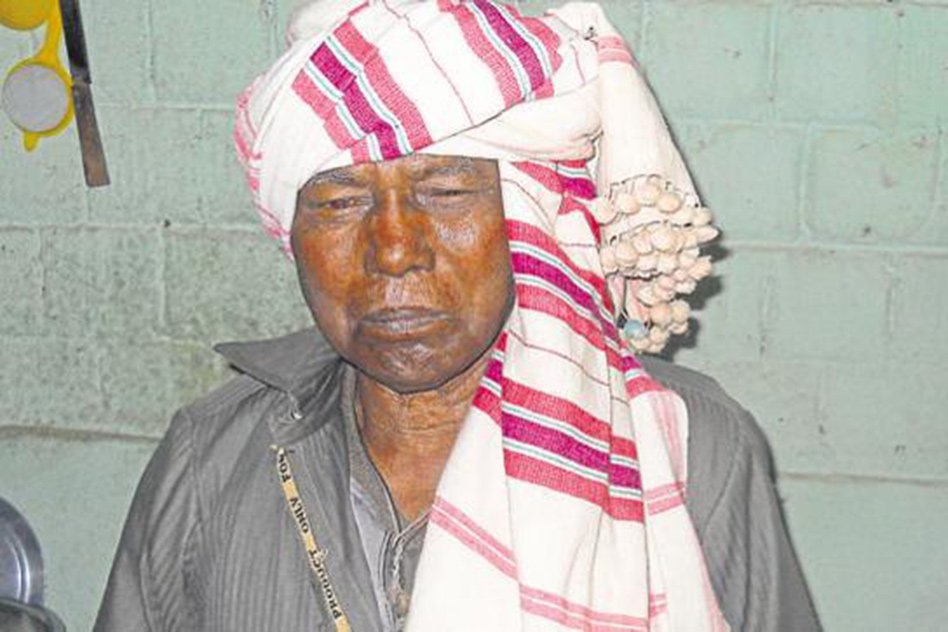Image Source: hindustantimes
The start of the journey
Bedo block looked very different from the way it looks today. Before the 1960s, there was a period of sudden frantic that was caused in the village when people were dying of hunger while others migrated to survive in a better place. People had lost hope when the land of Bedo became a sparse.
This took attention of the then young Simon Oraon. He dropped out of school when he was in class IV because he couldn’t have ignored the situation, and so he decided to take everything under his control. From then on, he did everything to restore the land not only to its previous state but to something even better. “I felt compelled to resolve the problems of deforestation and water crisis”.
The journey was a struggle. During rains, Oraon walked in the opposite direction of the streamflow to find out the crux of the matter. One day he mapped the contours of rainwater falling from the top of the hills. In the whirling terrain, water surged out making ravines. He thought that a dam built near the foothills could keep this water blocked which could then be used for irrigation through canals coming out in the plains.
Expedition of constructing dams
So it started. The then 28-year-old Oraon, along with his friends, went on to the expedition of constructing dams. In 1961, the first dam was constructed in Gaighat, Bedo. It was an unsuccessful trial because the structures were not constructed with enough resources to withstand the water force of the first few showers. Oroan did not lose a heart and then moved on to plead to the government. When the state water resource department finally intervened, a concrete dam stood on the foothills. This dam still stands as strong as new.
Later on without any support, Oroan went on to constructing one dam each at Deshbali and Jharia. Mango, Jamun, Sal and Jackfruit tree plantation drives of over 30,000 took place. There was not much support from the villagers and the officials, they mocked him when he first presented these ideas. He did not have any land to start the project with because the villagers told that they’d eventually submerge in the water. He won their hearts when he starting ploughing his own land and the scarce land of others who lost the land in dams. Furthermore, he stored five ponds in the villages of Hariharpur, Jamtoli, Khaksitoli, Baitoli and Bhasnanda which were linked to all the dams. The day finally came when the water level of Bedo had increased remarkably. There was now enough water to cultivate more than one crop a year. This initiative made a lot of difference and brought back a light of hope in the people of Bedo, which led to an ongoing movement. Gradually, the unused lands were also spread with golden harvest.
Well deserved Padma Shri award
Oraon, now 83, is going to be awarded the honorable Padma Shri, for that one step he took in his young age. He has not received any formal education or training. He is a Christian, but has consistently helped everyone without the knowledge of castes and religion. When people visit him, they are first shocked to see a crucifix, Jesus, Mary, the Holy Family and Mother Teresa.His boundless knowledge about nature and his leadership qualities has helped him gain respect from Hindu, Muslim, and many other tribal groups. His house is also ornamented with many certificates of honours. When people of stature visit him, they call him an engineer. “But I am not an engineer, I am an illiterate man”, he exclaims.
Widely known as Jharkhand’s Waterman and more warmly “Baba”, Oraon has been in a battle with drought since scores and decades. And he has very well won this fight because today Bedo does not only grows enough crops for its own people but also to supply in nearby villages, as well those of Bihar, Odisha and West Bengal; precisely, over 20,000 metric tonnes of vegetable supplies that go out every month from his mandi.
The environmentalist has dedicated his life to conservation of forest and water. His practices only spread when he started to teach the art of environment conservation to people from 51 other villages. 15,000 families now reap three crops, besides paddy, from nearly 2,000 acres of land.
The Waterman has done magic on Bedo and has influenced all the villages to do more and more. He has been a true example of how, with time, perseverance and patience, hard work eventually starts to bear its fruits. He believes in living in harmony with nature because only nature can protect us and keep us alive.
The Logical Indian community congratulates living legend “waterman” for the Padma Shri and wishes that more deserving people like him are awarded awards like Padma Shri. He is a true possessor of Padma Shri in all good spirits, Octogenarian Oroan, the Waterman of Jharkhand.
-Shruti Jain











